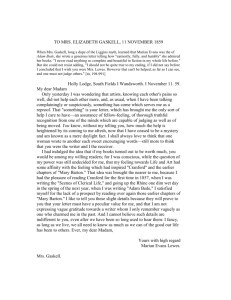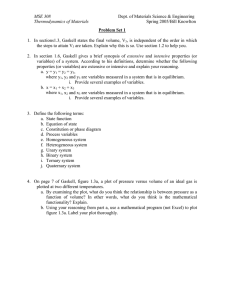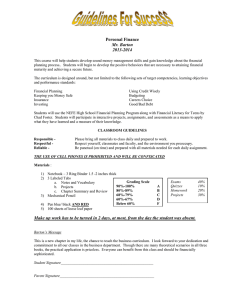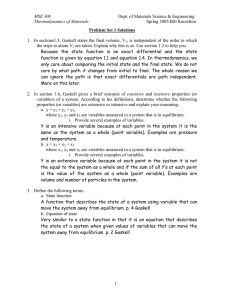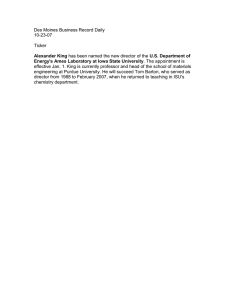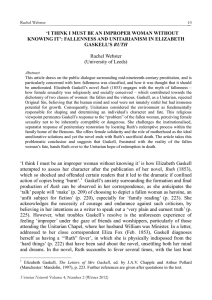21L481 Victorian Literature and Culture Paper #1
advertisement
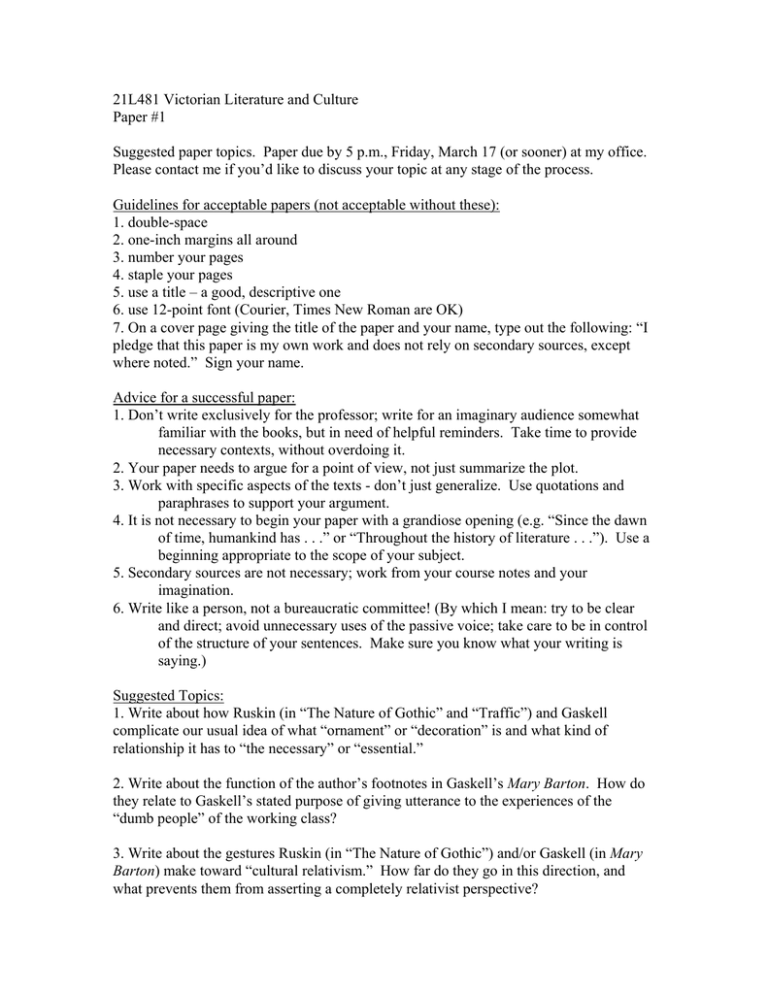
21L481 Victorian Literature and Culture Paper #1 Suggested paper topics. Paper due by 5 p.m., Friday, March 17 (or sooner) at my office. Please contact me if you’d like to discuss your topic at any stage of the process. Guidelines for acceptable papers (not acceptable without these): 1. double-space 2. one-inch margins all around 3. number your pages 4. staple your pages 5. use a title – a good, descriptive one 6. use 12-point font (Courier, Times New Roman are OK) 7. On a cover page giving the title of the paper and your name, type out the following: “I pledge that this paper is my own work and does not rely on secondary sources, except where noted.” Sign your name. Advice for a successful paper: 1. Don’t write exclusively for the professor; write for an imaginary audience somewhat familiar with the books, but in need of helpful reminders. Take time to provide necessary contexts, without overdoing it. 2. Your paper needs to argue for a point of view, not just summarize the plot. 3. Work with specific aspects of the texts - don’t just generalize. Use quotations and paraphrases to support your argument. 4. It is not necessary to begin your paper with a grandiose opening (e.g. “Since the dawn of time, humankind has . . .” or “Throughout the history of literature . . .”). Use a beginning appropriate to the scope of your subject. 5. Secondary sources are not necessary; work from your course notes and your imagination. 6. Write like a person, not a bureaucratic committee! (By which I mean: try to be clear and direct; avoid unnecessary uses of the passive voice; take care to be in control of the structure of your sentences. Make sure you know what your writing is saying.) Suggested Topics: 1. Write about how Ruskin (in “The Nature of Gothic” and “Traffic”) and Gaskell complicate our usual idea of what “ornament” or “decoration” is and what kind of relationship it has to “the necessary” or “essential.” 2. Write about the function of the author’s footnotes in Gaskell’s Mary Barton. How do they relate to Gaskell’s stated purpose of giving utterance to the experiences of the “dumb people” of the working class? 3. Write about the gestures Ruskin (in “The Nature of Gothic”) and/or Gaskell (in Mary Barton) make toward “cultural relativism.” How far do they go in this direction, and what prevents them from asserting a completely relativist perspective? 4. Write about the critique of “universalism” that emerges from the installments of Bleak House we have read so far. 5. Write about the “interlacing” of Bleak House’s two narrative voices, as characters introduced in one account resurface in the other. Survey specific examples and note the important effect of these shifts of perspective. 6. In Mary Barton, a couple of documents travel in a very striking way throughout the society that novel describes. Look at what becomes of the Samuel Bamford poem which Job Legh reads to John Barton (pp. 111-13), and of the drawing Harry Carson makes during the employers’ meeting with the workers (p. 184ff.). How do the original intentions behind these documents get altered as they are transferred from one context to another? How do these traveling documents relate to Gaskell’s attempt to achieve a perspective capable of embracing the whole of her culture?
